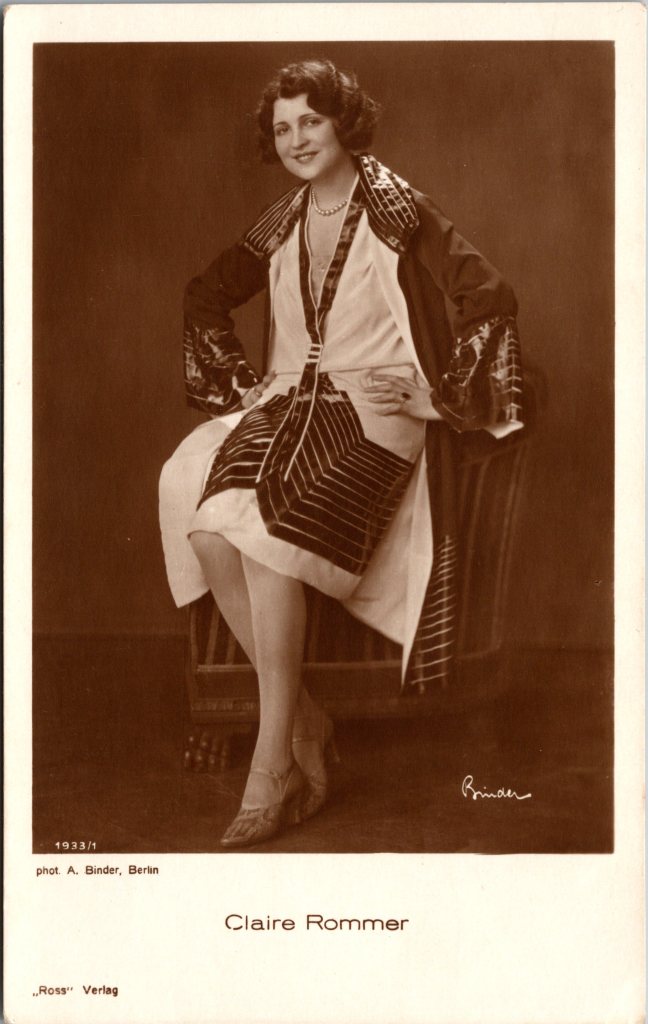POSTCARD 3 (SOLD)
These vintage real photo postcards feature German film actress, Claire Rommer (1904-1996). Her filmography on IMDb credits her with 49 film appearances between 1922 and 1934. She made her film debut at the age of eighteen. She also began her career as a soubrette appearing in operettas and comedies on the Berlin stage. However, her fame came from her film work. She played both leading and supportive roles. She played in silent films and made a successful transition to sound films. She even sang in some of her talkies. She was married to a prosperous Jewih man, named Adolf Strenger. Because of her marriage, in 1938 she was banned from any participation in the German film industry. It was thought that she was probably not Aryan like her husband. The rise of the Nazis forced the couple to leave Germany and emigrate to the United States via Portugal.The pair left Europe with the assistance of Aristedes de Sousa Mendes. He was a Portuguese Consular stationed in France. Mendes defied orders from his government and issued thousands of visas to Jews, allowing them to escape with their families and their lives. He was a hero for his work as a Holocaust rescuer. Ultimately, Mendes was severely punished for his defiance. After leaving Germany, Rommer’s film career ended. In the US, she divorced her husband and married a meat industry multi-millionaire.
Postcard 1 was published by Ross Verlag as part of a series (No.1933/1). Claire Rommer’s photo portrait was taken by celebrity photographer, Alexander Binder. This vintage photo postcard is in excellent condition (see scans). (SOLD)
Postcard 2 was published by Ross Verlag as part of a series (No.1933/2). Claire Rommer’s photo portrait was taken by celebrity photographer, Alexander Binder. This vintage photo postcard is in very good condition (see scans). (SOLD)
Postcard 3 was published by Ross Verlag as part of a series (no.3010/1). Miss Rommer’s portrait was taken by famed celebrity photographer Alex Binder, who operated his studio in Berlin. The postcard was postmarked in 1928. (SOLD)





